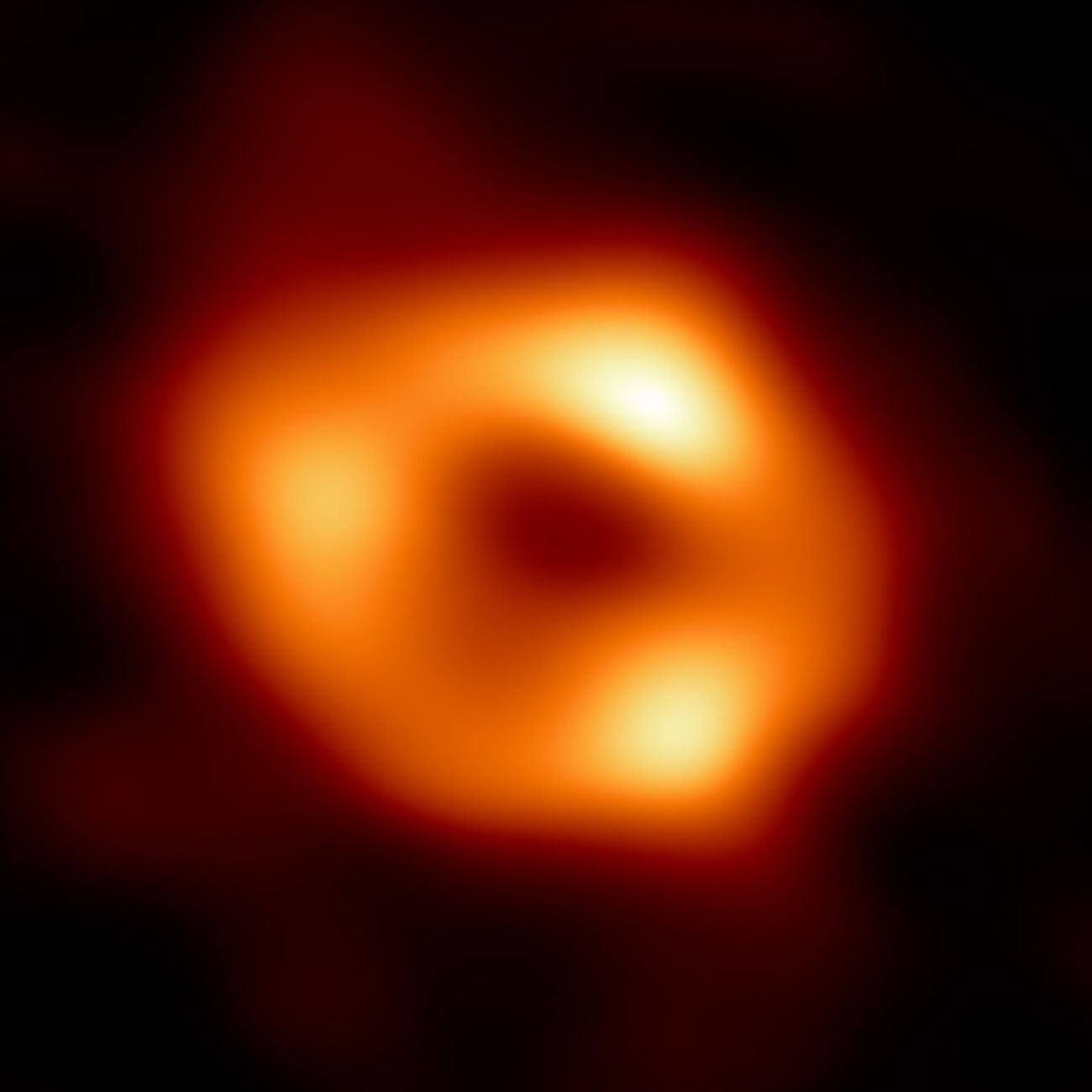How to spot a black hole from the University of Michigan

Astronomers this week finally confirmed the assumptions: There is a supermassive black hole in the center of our Milky Way galaxy, and they have the receipts to prove it.
The image, released at a media conference Thursday in Washington, D.C., shows a lumpy lumincient doughnut with a black center now known as Sagittarius A* — pronounced Sagittarius A-star — a supermassive black hole at the center of our galaxy that is swallowing up matter light years away.
The image looked nearly identical to the first supermassive black hole scientists found in 2019 in a galaxy 54 million light years away, but that’s about all the two have in common, said University of Michigan astronomy research scientist Mark Reynolds.
Reynolds helped the Event Horizon Telescope project find the Sagittarius A* by observing wavelengths for years. The team consists of more than 300 scientists that oversee a global network of telescopes that span around the Earth.

He told Bridge Michigan the discovery will help astronomers learn more about the millions of black holes scattered across the Milky Way.
“It’s a phenomenal achievement,” Reynolds said. “Now we have two of these supermassive black holes that we can image directly and the path is open for us to image many more of these systems in the coming decades.”
Related:
- Cheers for Dr. Fauci at comeback University of Michigan commencement
- At MSU, isotope center opens to unlock universe, revolutionize medicine
Bridge talked to Reynolds this week to learn everything you need to know about the gentle giant dwelling in the center of our galaxy:
What is a black hole?
A black hole is a place in space where gravity pulls so much that nothing, not even light, can escape from it. The gravity is so strong because matter (anything with mass that takes up space) is compressed down to a tiny point.
“Something would have to travel greater than the speed of light to escape and that’s not possible,” Reynolds said.
What are the types of black holes?
There are three types of black holes. The smallest are stellar black holes that form when stars much bigger than our sun explodes.
Such black holes are generally 10 to 24 times the mass of the sun and their diameter is generally 26 miles, about the same as the distance from downtown Detroit to Pontiac.
Reynolds said those black holes are common, millions of them are scattered throughout the Milky Way.
Then there are intermediate-mass black holes that can contain the mass of 100 to 10,000 suns. Some scientists believe intermediate-black holes form when multiple stellar black holes collide.
Supermassive black holes, like Sagittarius A*, dwell in the center of most galaxies and are heavier with masses ranging from millions to billions of solar masses.
Scientists estimate Sagittarius A*’s radius is about 14 million miles.
Scientists are still stumped as to how supermassive black holes get so big, but Reynolds said one theory is they have been feeding on what is around them for billions of years.
What do black holes look like?
Black holes are a large amount of mass in a small space. When things go into the black hole, they are torn apart and a massive amount of energy is released called the event horizon.
The event horizon is the luminous doughnut surrounding the black center in images. When the center of the black hole is not rotating, then its shape will be a sphere but there isn’t a physical surface.
If the center rotates, the black hole’s event horizon will change. Reynolds said it becomes wider and flattens at the poles.
“Basically, all black holes rotate,” Reynolds said.
How did you find a supermassive black hole?
Astronomers predicted there was a supermassive black hole, but Reynolds said finding Sagittarius A* was not easy.
The best place to start looking for a supermassive black hole is the center of a galaxy, according to Reynolds. That’s because the highest density of stars are towards the center.
“A really smart place to point your telescope is where the most objects are,” Reynolds said.
Despite their namesake and ability to swallow light, black holes are actually some of the most luminous objects in space.
The materials black holes gobble up, like shredded stars, are heated up and spit out with a ridiculous amount of pressure — the flares can be seen across the universe.
Reynolds said the next step is observing the wavelengths of flares shooting out of a supermassive black hole. Sagittarius A* is known for its solar flares which happen once or twice a day.
Reynolds said it took a massive team of scientists tuning telescopes to shorter wavelengths over two decades to see past the haze that was previously captured. The result? Direct images of plasma orbiting a black hole.
How far away from Earth are these supermassive black holes?
Sagittarius A* is 27,000 light years from Earth and the only supermassive black hole in our galaxy. The other supermassive black hole scientists have images of is M87*, and it’s much larger than Sagittarius A*.
M87* wreaks havoc in a galaxy 55 million light years away from Earth and it’s one of the largest black holes known. This supermassive black hole is 1,000 times more massive than Sagittarius A* but because of their distance from Earth, both black holes look the same in the sky.
How powerful is this thing?
It depends on how close you are to the black hole. A black hole’s power is felt when something nears its surface.
If our sun was replaced with a supermassive black hole, things could get interesting, Reynolds said.
“We would have to speed, but we could probably orbit stably,” Reynolds said.
When something nears the surface of black hole, the gravity is incredibly strong. Far away, it’s the same gravity everywhere else.
“We have seen stars get close to black holes and they get torn apart,” Reynolds said. “It’s an incredibly powerful entity.”
Michigan Education Watch
Michigan Education Watch is made possible by generous financial support from:
Subscribe to Michigan Education Watch
See what new members are saying about why they donated to Bridge Michigan:
- “In order for this information to be accurate and unbiased it must be underwritten by its readers, not by special interests.” - Larry S.
- “Not many other media sources report on the topics Bridge does.” - Susan B.
- “Your journalism is outstanding and rare these days.” - Mark S.
If you want to ensure the future of nonpartisan, nonprofit Michigan journalism, please become a member today. You, too, will be asked why you donated and maybe we'll feature your quote next time!






